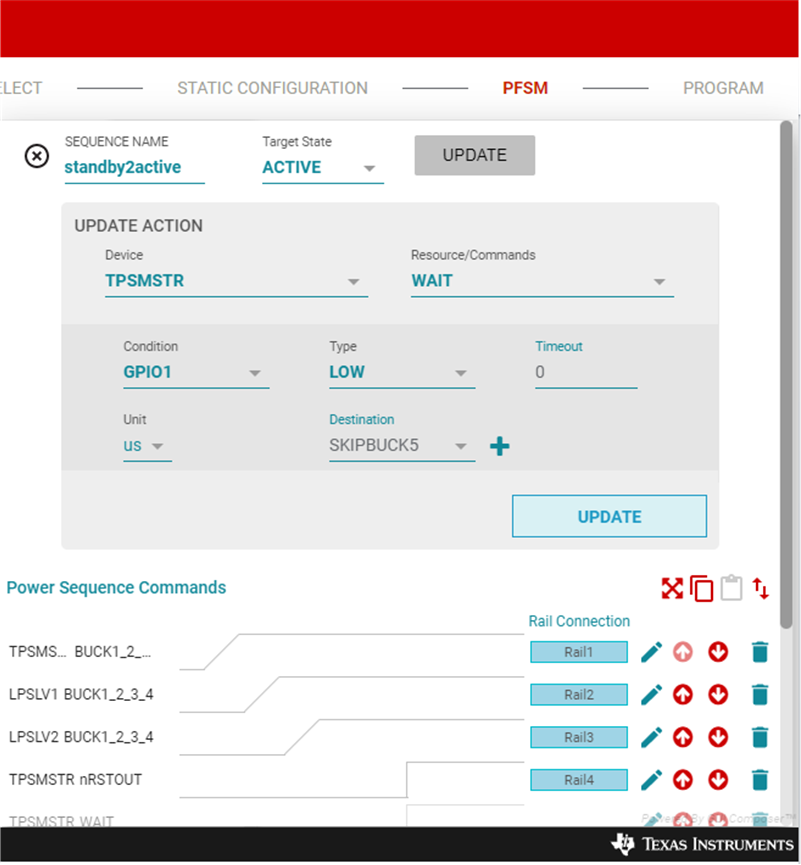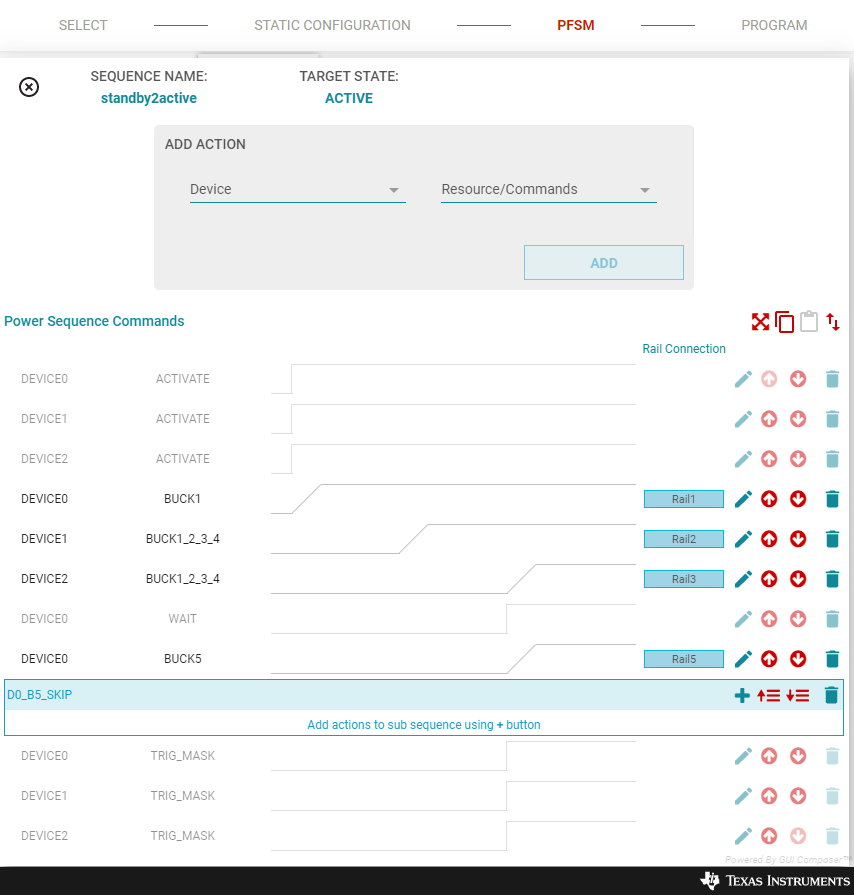SLVUBT8B November 2020 – June 2022 LP8764-Q1 , TPS6594-Q1
- Scalable PMIC's GUI User’s Guide
- Trademarks
- 1 Introduction
- 2 Supported Features
- 3 Revisions
- 4 Overview
- 5 Getting Started
- 6 Quick-start Page
- 7 Register Map Page
- 8 NVM Configuration Page
- 9 NVM Validation Page
- 10Watchdog Page
- 11Additional Resources
- 12Appendix A: Troubleshooting
- 13Appendix B: Advanced Topics
- 14Appendix C: Known Limitations
- 15Appendix D: Migration Topics
- 16Revision History
8.1.2.3.2 Sub-sequences
Sub-sequences are groups of commands within the power sequence and are associated with the JUMP or WAIT instructions. Functionally, the sub-sequence is simply a destination label for the JUMP or the WAIT statements to jump to. Graphically, the sub-sequence can be used to group commands and then the entire group can be moved within the power sequence. In Figure 8-19, the WAIT instruction is used to test GPIO1, if GPIO1 is high, then the timeout occurs and the execution jumps to the SKIPBUCK5 label and continues execution. Specifically, if GPIO1 is low then BUCK5 is enabled, if GPIO1 is high, then the regulator is not enabled. Figure 8-20 shows that there are no instructions within the sub-sequence. Instructions placed within or after the sub-sequence will be chronologically equivalent. Again, the main benefit of placing instructions within the sub-sequence is to logically group the commands and then to move them as a group when needed.
 Figure 8-19 WAIT Command Action
Figure 8-19 WAIT Command Action Figure 8-20 Empty Sub-Sequence
Figure 8-20 Empty Sub-Sequence